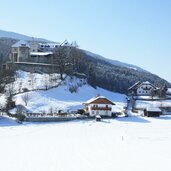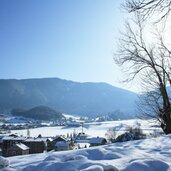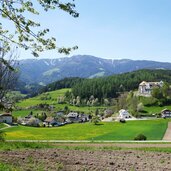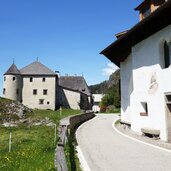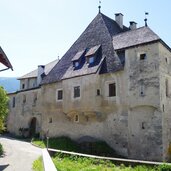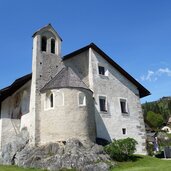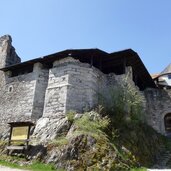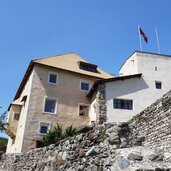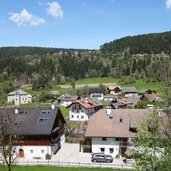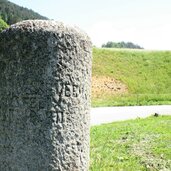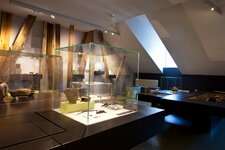A Roman milestone was discovered below Castelbadia Castle: Today, a faithful replica stands at the site
Image gallery: Castelbadia
Castelbadia (Sonnenburg) is a place shaped by its long history. An impressive example is Badia Castle, which is perched on a rock above the village centre. In the former monastery church, the crypt and an exceptionally large 12th-century figure of Christ testify to this past. Below the castle complex, which is now a hotel, a milestone from the Roman era was discovered.
The original is on display in the Ferdinandeum in Innsbruck and was once erected for Emperor Marcus Opellius Severus Macrinus and his son Diadumenianus. For eight centuries, the Benedictine nuns ruled over the Val Badia from Castelbadia Castle and exercised jurisdiction in Marebbe. After the monastery was dissolved at the end of the 18th century, the castle served temporarily as a military hospital during the Tyrolean Rebellion.
In the village, the Chapel of St. John in the Hospital, built into a rock face, can still be seen today. It commemorates the hospice that was once located on this site. Another historic building marks the entrance to the village: the imposing Hebenstreit Residence. Attractive farmhouses line the village street. If you want to explore the area around Castelbadia, there are pleasant tours, such as the Archaeological Panorama Trail at the Museum Mansio Sebatum, the hike over the hills from Casteldarne to Castelbadia, and the circular route from San Lorenzo via Castelbadia to Campolino.
In winter, you can reach the hamlet of Santo Stefano at the foot of Mt. Plan de Corones in about two hours via the Mühlbachmoos and Brunnermoos biotopes. Above the village of Santo Stefano, at the Haidenbergerhof rest point, you can hire toboggans. In addition, a bus service connects Castelbadia and the main village of San Lorenzo every half hour.


